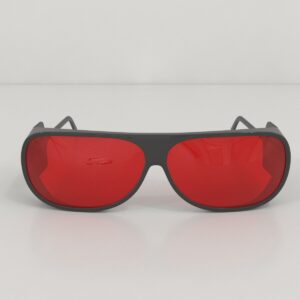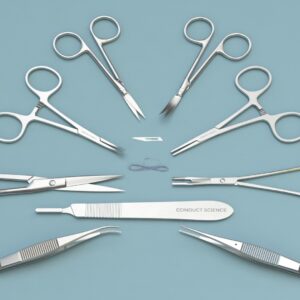$190.00
The Injection Cone is designed to be used with rodents, namely rats and mice for fast and efficient batch injection. The injection cone is made with transparent acrylic material, durable, easy to clean, and stable to manage.
ConductScience offers the Injection Cone and Injection Cone with Light

RWD is a global leader in the design and manufacturing of advanced research and laboratory equipment. Specializing in high-precision instruments for neuroscience, behavioral science, and pharmacology.



Our Injection Cone is the quickest and easiest restraint for tail vein injections.
We offer a unique injection cone apparatus for rodent test subjects which is manufactured by our professional team with high-quality materials, which guarantees a product with great durability.
This is an extremely useful tool for large quantity samplings and their unique design allows an efficient positioning of tailed rodents for maximum results.
The completely transparent acrylic design of the injection cone provides a complete visual of the test subject, with four suction cup feet to secure the unit firmly to a surface
The rodent is held secure in the clear plastic cone to allow the user researcher to complete the procedure with maximum efficiency, reducing the chances of test subject distress
We offer our injection cones for mouse and rat test subjects. Please see our similar unit that possesses a bright light illumination system for optimal results.
An injection cone is used to restrain rodents for administering intravenous tail injections. Animal restrainers like injection cones, light arc, Broome handler, and flat bottom restrainers have been used for years for restraining or immobilizing rodents in psychological experiments for tail vein injections. However, as a potential source of stress, restrainers should be designed to minimize the stress for the animals. Briefly, the injection cone aims to restrain the animals, specifically rodents, to ensure proper drug/anesthesia administration.
The injection cone for rodents is made of high-quality, durable acrylic material. Its unique design allows effectual animal positioning for maximum results. The transparent cone design ensures the complete and accessible vision of the restrained animal, and its four suction cup feet secure the apparatus firmly on the benchtop. Easy-to-clean and stable-to-manage injection cone is best suited for robust and efficient batch injection. An injection cone with light is also available for optimal results.
Calculate the dosage volume to be administered according to the subject’s body weight for accurate drug administration. Fill the syringe with the drug of choice and carefully remove air bubbles from the syringe. Ensure that the drug temperature is moderate, as a cold drug solution can lead to hypothermia in the subject.
Put the subject in the restrainer by pushing it through the injection cone such that its hind legs are held behind. Secure the nose piece and release the subject’s tail. Follow appropriate handling techniques to minimize restraint stress.
Once the animal is immobilized, submerge its tail in warm water (pre-heated to 42oC) for approximately 43 seconds to allow vasodilation. Dry the tail using a paper towel and check which lateral vein is more visible. Now readjust the animal in the restrainer such that the selected caudal vein is in front of you. Grip the rodent’s tail in your non-dominant hand, bending it over your index finger and holding it with your thumb. Take the syringe in your dominant hand, keep it parallel to the vein, and insert the 6-7mm needle into the vein. Do not plunge the needle deep inside the vein as it might cause blood aspiration.
Gradually push the plunger and if the subject resists, immediately remove the needle. Then, insert it 1-2cm away from the previous site. Do not try to pull the blood out of the needle as it can rupture the vein. Take the needle out, cover the injection site with a swab.
Shift the animal back to the cage and remove the swab. Thoroughly clean the injection cone with water and absolute alcohol before proceeding with the next subject.
Intravenous Tail Vein Injections
Rodents like rats, mice, and hamsters can be immobilized using injection cones for tail vein injections. Tail vein injections are frequently used for hydrodynamic gene delivery, venous blood collection, and intravenous infusions because of their convenience. Lateral caudal tail veins are thicker than the dorsal metatarsal and medial saphenous veins, making them easier to access for intravenous injections and venous blood collection. There is no need to anesthetize the subject before tail vein injections; therefore, the rodent is just immobilized or restrained with an injection cone. The researchers hold the tail, immerse it in warm water (approximately 40oC) for a few seconds and then pat it dry. The experimenters hold the tail in their non-dominant hands, clean it with alcohol-soaked cotton, and wipe it with sterile gauze. Then, they administer the injection with their dominant hand. The subject is then released into its cage.
Stereotaxic Gene Delivery in Rodent Brain
Cetin et al. (2007) used an injection cone to administer anesthesia during stereotaxic gene delivery in rodent brains. Before starting the surgery, the researchers sterilized the equipment, disinfected the surgical site, and then administered anesthesia. The researchers weighed the animals and calculated appropriate pre-anesthesia and anesthesia doses. They prepared a mixture of ketamine and xylazine with 80-100mg ketamine and 10mg xylazine per kg of body weight of adult rodents and 40-50mg ketamine with 5mg xylazine for rodent pups. The experimenters gently restrained the young animals and subcutaneously (in the scruff at the back of the animal’s neck) injected them with 0.02mg atropine per kilogram body weight as pre-anesthesia. They injected paranesthesia 10 minutes before the anesthetic.
To inject the ketamine xylazine mixture, the researchers immobilized the smaller animals with their hands and the larger animals with an injection cone such that their abdomen was facing upwards. Then, they subcutaneously injected the anesthetic (ketamine-xylazine mixture) into the left abdominal quadrant using a 22-23G needle. They ensured that the animal slept but was still sensitive to nociceptive stimuli within 2.5minutes and reached surgical anesthesia (i.e., did not respond to nociceptive stimuli) within 7.5 minutes. The experimenters successfully performed stereotaxic surgery for gene delivery in the rodent brain.
The injection cone is the easiest and quickest rodent restraint for intravenous, intraperitoneal, or subcutaneous drug/anesthesia administration. It is well-suited for large quantity sampling. Additionally, the transparent design allows a clear view of the animal. Using the injection cone during tail vein injections eliminates the need for anesthetizing the animal. The cone firmly holds the animal, ensuring efficient and robust drug administration. But a potential disadvantage of this firm grip is that it causes more stress to the subject as it tries to run away to free itself.
Moreover, this method of restraint is well suited and highly effective for white strains of transgenic mice with easily accessible lateral tail veins. However, in black mice, poor vein to skin contrast due to the black tinge on the top of the tail, the veins are difficult to find (Messer, 2015). For this, an injection cone with light can be used to illuminate the subject and make the veins more visible.
Cetin, A., Komai, S., Eliava, M., Seeburg, P. H., & Osten, P. (2007). Stereotaxic gene delivery in the rodent brain. Nature Protocols, 1(6), 3166-3174.
Messer, J. (2015). Improving intravenous injection in black mice.
| Brand | RWD |
|---|---|
| Size | Rat |
You must be logged in to post a review.
There are no questions yet. Be the first to ask a question about this product.
Reviews
There are no reviews yet.